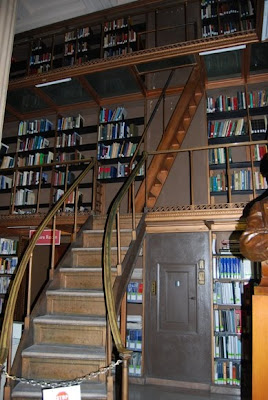
I really thought it would be harder on me to leave me kids for the week I was at my conference. It was pure coincidence that my kids had stuff scheduled that same week. My daughter had been accepted at the American Legion Auxiliary’s Girls State. The program is a week long exercise in state government for girls who have just completed their junior year in high school. The American Legion holds a similar, though not identical, program for junior boys held at Southwest Minnesota State University in Marshall. Eash program chooses one candidate to attend Girls and Boys Nation. Campaigning, voting and learning how the state runs was a great experience. I had really worried that there would be partisan bias and she would be uncomfortable, but it went reasonably well.
She learned a lot during the week long event that was held at Bethel University in a St. Paul suburb. She did notice that many of the volunteers were older women, which didn’t really surprise either of us. Through my numerous experiences with the Legion and the Auxiliary--I have noticed that many are stuck in the thought that few women are veterans. I was proud of my daughter for trying to point out that not all of our “servicemen” are indeed, male. She told me that she was rudely informed that servicemen is inclusive, means all service members and that women in the military know and appreciate that. While my daughter took her scolding quietly, I was very disappointed in them.
The American Legion recently wrote that they needed to work harder at being inclusive and reaching out to our servicewomen. Women, not men. It is a distinction that is made within and outside the military, the Department of Veteran’s Affairs and service organizations. As a disabled Gulf Era veteran who has witnessed the discrimination and violence against female service members, I assure you, I do mind being called a serviceman. I was a service member. Ironically, just a week or so before Girls’ State event the Legion had been on Capital Hill demanding that the Department of Veteran’s Affairs be more responsive to female veterans. It was a statement that the organization really needs to take to heart and apply to their own ranks. Other than a couple incidents, the week went well.
My daughter befriended a niece of a woman I went to college with. Neither of us made the connection until my friend noticed it on Facebook. What a small world. Despite a few bad apples, my daughter was pleased with the experience. Maybe as children of female veterans become involved the stereotypes of women in the military will finally begin to change--at least I hope so. I also hope as the next generation comes into play, the program can adapt in positive ways. No matter what, it was an experience that my daughter will always remember. Anyone interested in the program for girls entering their senior year should contact either their local Legion Auxiliary or the state office.














































